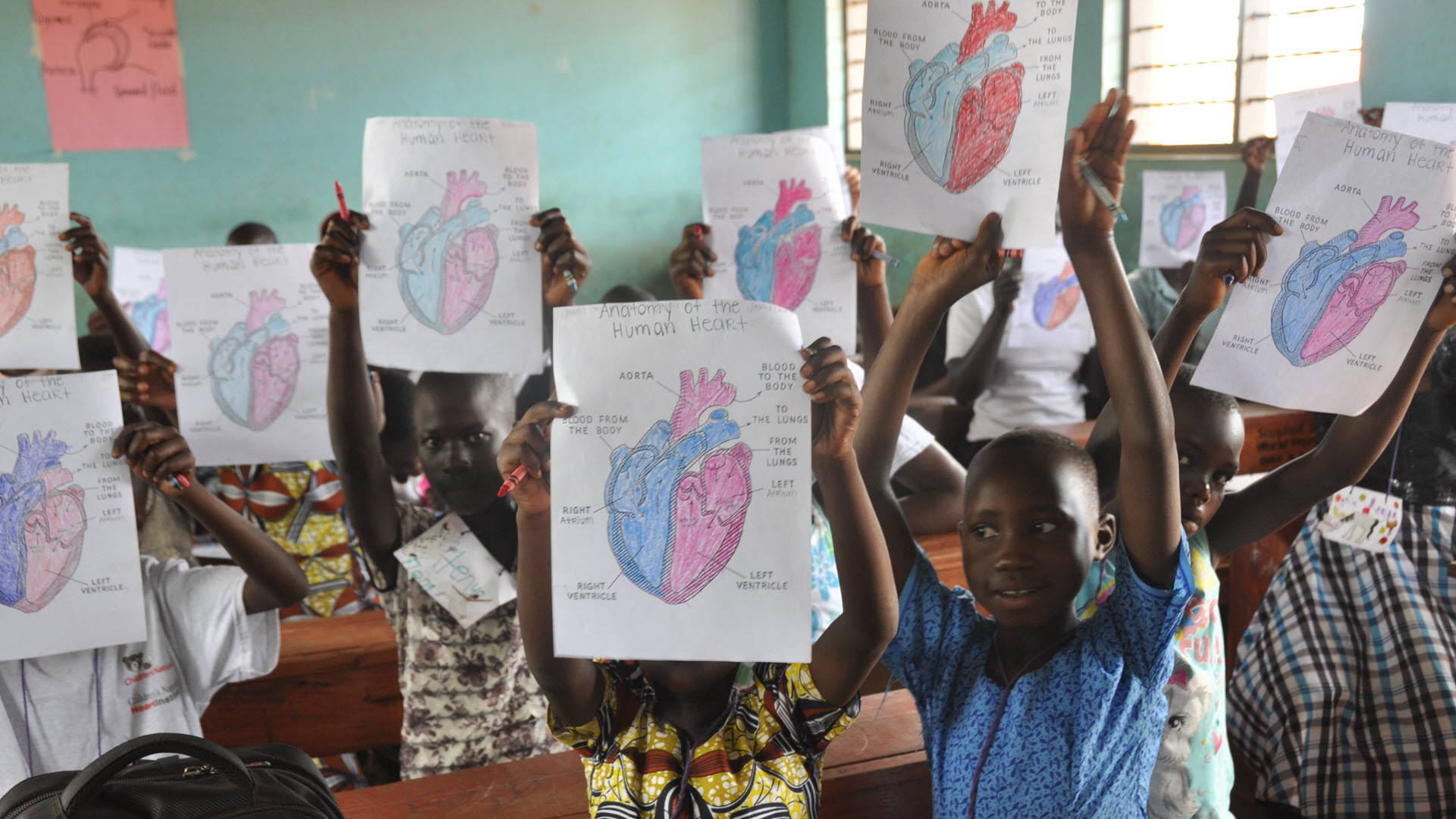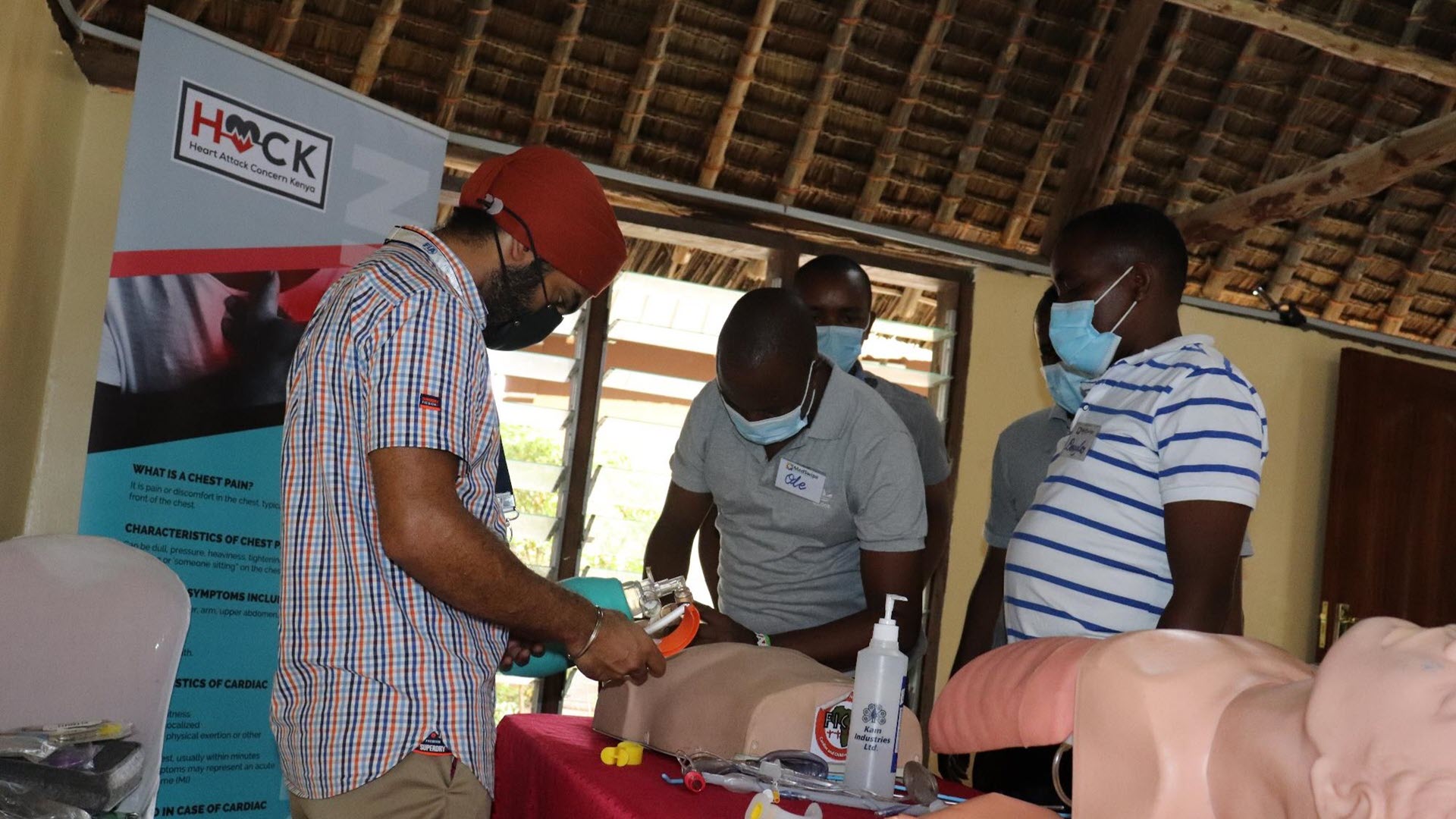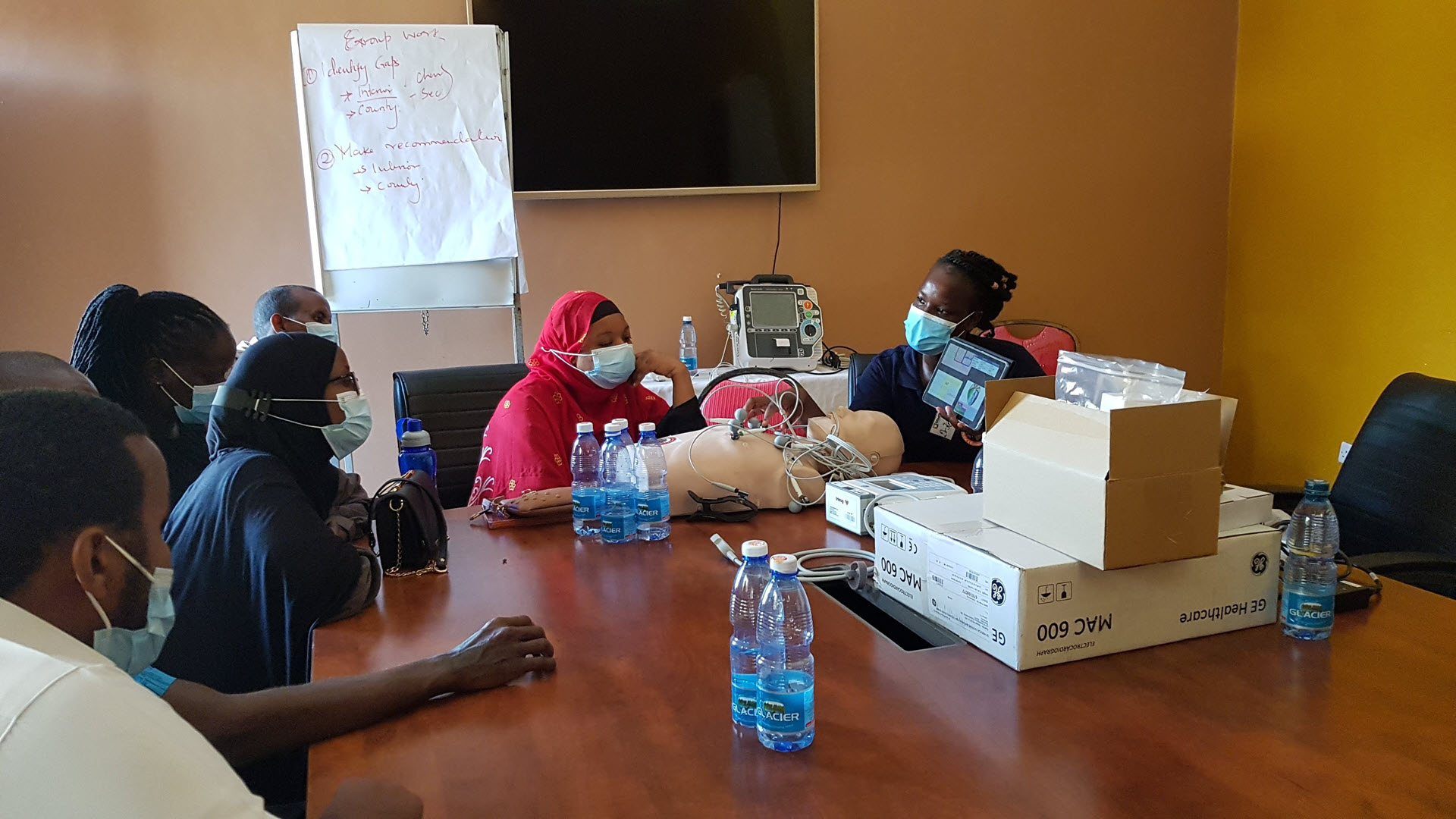To provide another example, he presented a pilot providing community screening, referral, and treatment funding for children and young adults with CVD, especially those suffering from rheumatic and congenital heart disease. What started as screening camps, fundraising dinners and a charity run in Nairobi to fund surgical and catheter interventions at a local hospital evolved into nationwide fundraising runs, including corporate initiatives to support the treatment of over 200 children and young adults in Kenya annually.
Finally, he shared the story of the Healthy Heart Africa program, which started by providing screenings for the community and referrals for treatment at health centres at the county level in Kenya. It has been scaled to a national level, enabling the development of Kenya’s first national guidelines on CVD. Most health centers now receive training and introduce CVD risk assessment as routine practice at the primary care level.
To successfully scale a pilot project, it is also worth involving decision makers, care providers and the local community early on, so they can experience the pilot step by step. Finally, Dr. Yonga highlighted the importance of regular feedback at each scaling milestone to correct course if necessary, as the environmental, social, cultural, and political environment evolves during the life of the project.










